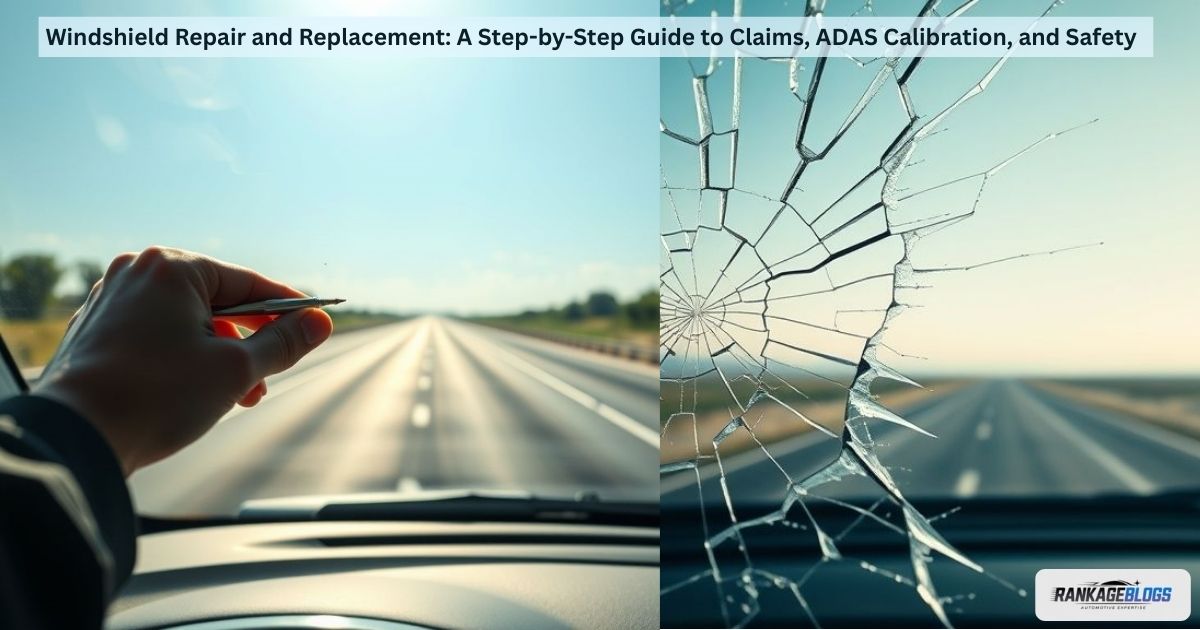Navigating the world of windshield repair and replacement is a critical part of vehicle ownership, a service that addresses damage to restore safety, clarity, and structural integrity. This comprehensive process involves assessing damage to determine if a resin-based repair is sufficient or if a full replacement is necessary.
It seamlessly integrates with insurance claims and includes essential Advanced Driver Assistance Systems (ADAS) calibration. The goal of any windshield repair and replacement is to ensure your vehicle remains safe and compliant. Understanding the windshield repair and replacement process empowers you to make informed decisions.
Understanding Auto Glass Damage: Causes, Types, and Assessment
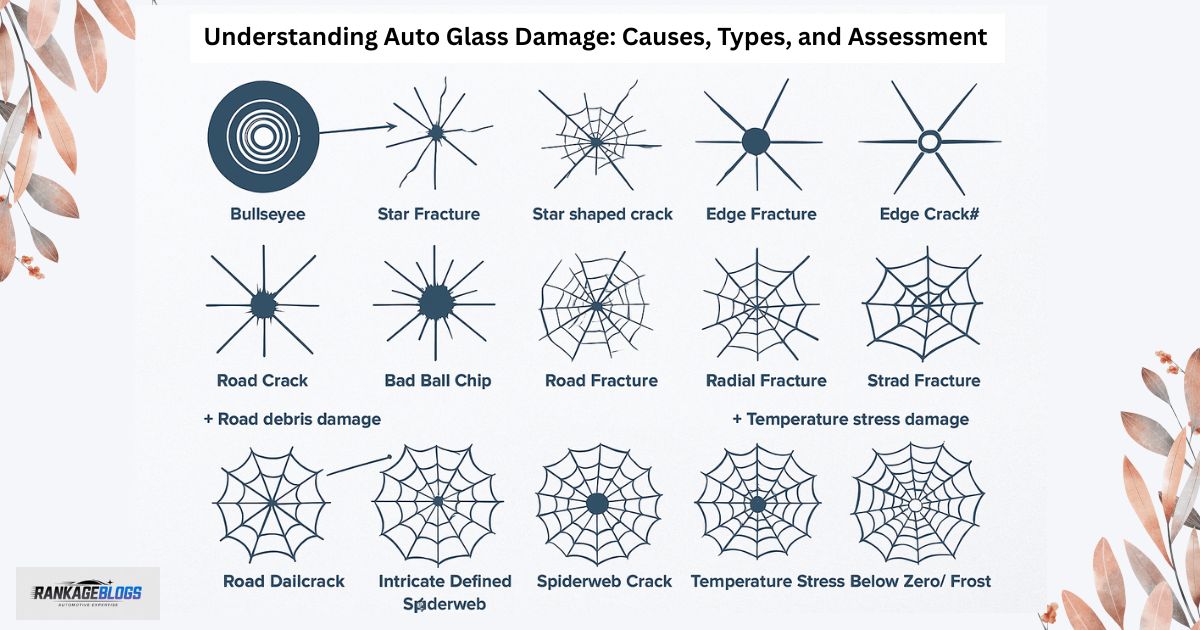
Recognizing the nature of your windshield damage is the first step toward a solution. Damage can occur instantly from a direct impact or develop slowly over time due to stress. Understanding the common causes and specific types of damage helps you assess the urgency of the situation, communicate effectively with your insurance and technician, and determine whether a simple repair will suffice or a full replacement is necessary for your safety.
Common Causes of Damage: Road Debris, Thermal Stress, Vandalism, and Flaws
The most frequent culprit is road debris—rocks, gravel, and other objects kicked up by tires. Temperature changes cause thermal stress; a cold shower on a hot windshield can cause it to contract unevenly and crack. Vandalism, accidents, and hail damage are other common causes. Rarely, a manufacturing flaw or improper previous installation can create a weak point that fails under normal driving conditions.
Types of Damage: Chips, Cracks (Edge, Spiderweb, Stress), Pitting, and Scratches
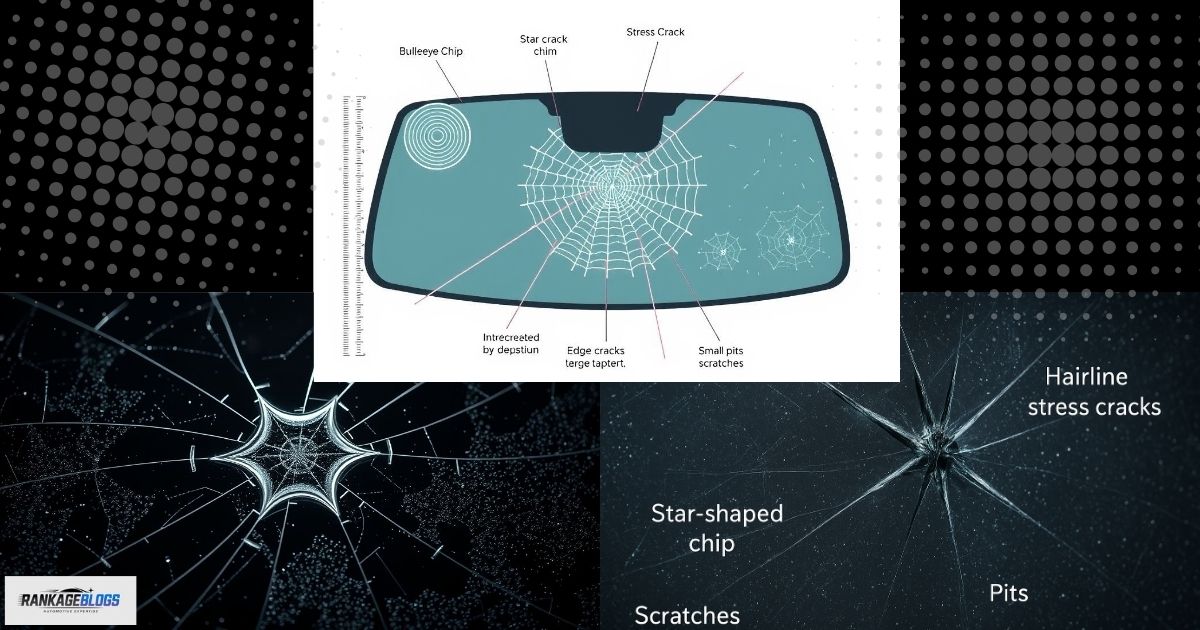
- Chip:A small piece of glass missing, often star-shaped or circular (bullseye).
- Crack:A line that forms in the glass.
- Edge Crack:Starts within 2 inches of the windshield’s edge.
- Stress Crack:Occurs without impact, often due to temperature change or frame twist.
- Spiderweb/Crack Chip:A series of short cracks emanating from a point of impact.
- Pitting:Numerous small, shallow craters caused by sand and fine debris, which can scatter light and blur vision.
- Scratches:Surface-level marks, usually from worn wiper blades or improper cleaning.
How to Properly Inspect and Assess Damage Severity
- Locate the Damage:Find the primary point of impact.
- Measure the Damage:Use a ruler. Most repairs are possible if the chip is smaller than a quarter or the crack is shorter than 3 inches.
- Check the Location:Damage directly in the driver’s line of sight is more critical. Edge cracks are often more complex to repair and can compromise structural integrity faster.
- Check the Depth:If the damage has penetrated through both layers of glass (laminated glass), a repair may not be possible or safe.
The Impact of Damage on Vehicle Safety and Resale Value
A damaged windshield compromises the structural integrity of your vehicle, increasing the risk of roof collapse in a rollover. It also provides support for passenger airbags. Pitting and cracks scatter light, creating glare and reducing visibility, especially at night or in rain. From a financial perspective, unresolved glass damage significantly reduces your car’s resale value, as it signals deferred maintenance and potential safety issues.
The Complete Guide to Filing an Auto Glass Insurance Claim
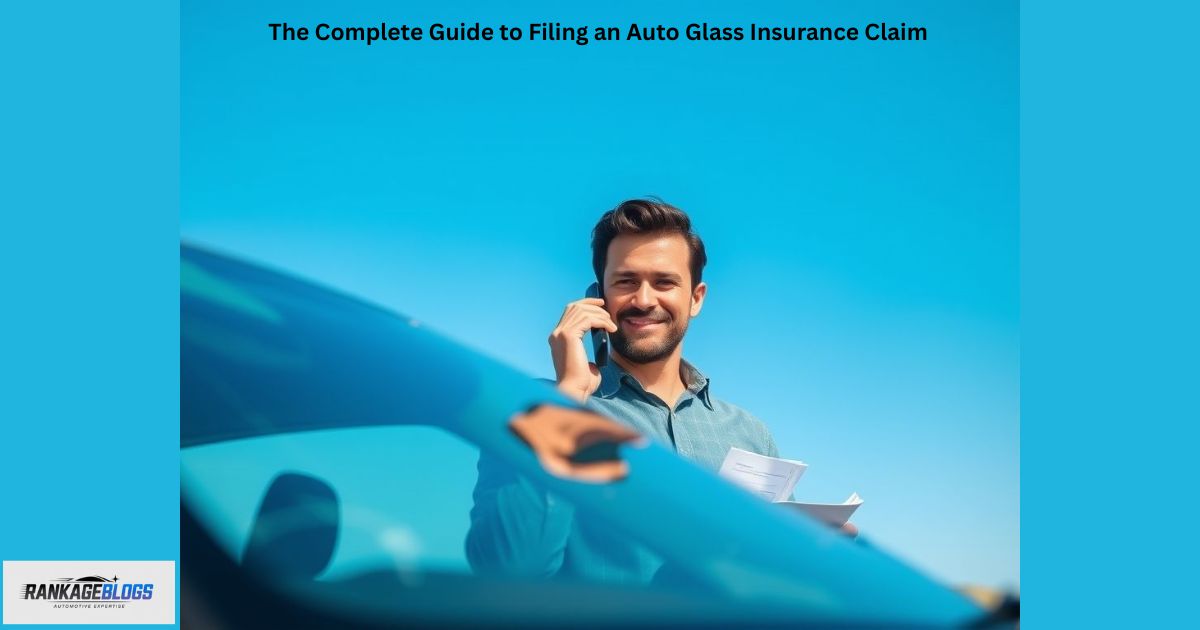
Filing an auto glass insurance claim doesn’t have to be stressful. A methodical approach ensures you maximize your coverage, assert your rights, and secure a high-quality repair or replacement. The process involves assessing the damage, understanding your policy, communicating clearly with your insurance provider, choosing a qualified installer, and managing the paperwork. Knowing what to do at each step protects you from common pitfalls and leads to a smooth, successful outcome.
Step 1: Inspect the Damage – Repair vs. Replace Guidelines
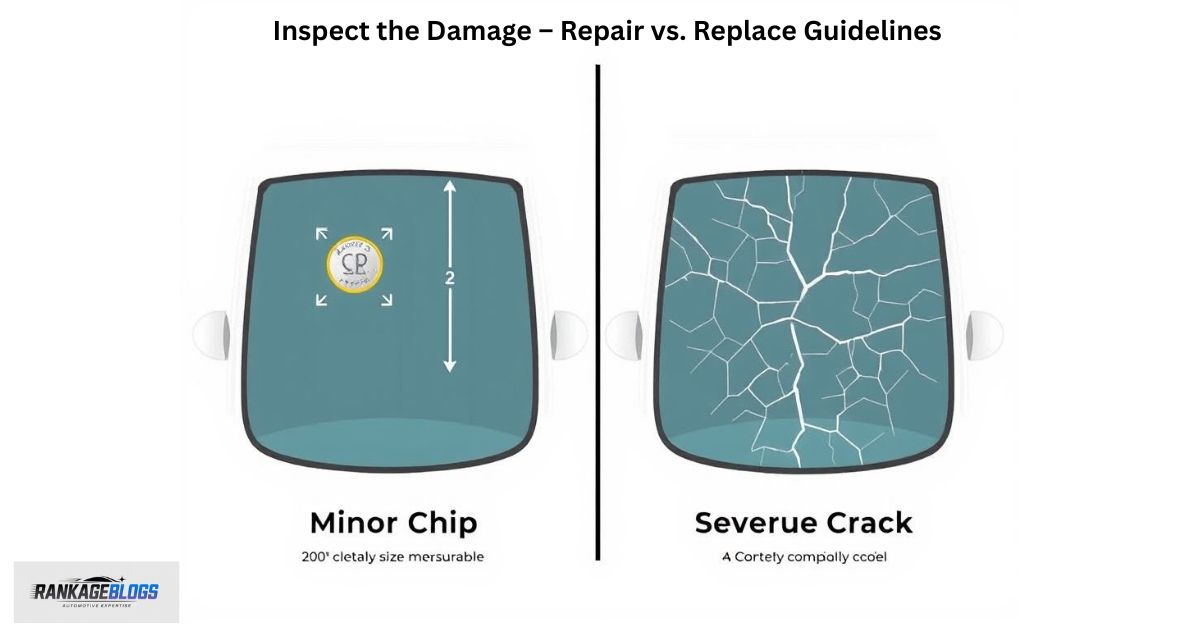
Before you call, know what you’re dealing with. As a general rule:
- Repair is often possible if:The chip is smaller than a dollar coin. The crack is shorter than 3 inches. The damage is not in the driver’s critical vision area.
- Replacement is likely needed if:The crack is longer than 3 inches. The chip is very large or deep. The damage is on the edge of the windshield. It is directly in the driver’s line of sight.
Step 2: Review Your Policy and Know Your Rights Before Calling
Pull out your policy declaration page. Confirm you have comprehensive coverage. Check for a specific glass deductible or a zero deductible endorsement. Research your state’s laws so you know what the insurer is legally required to provide. This knowledge prevents an adjuster from giving you incorrect information about your deductible or shop choice.
You can find a complete breakdown of your rights and your state’s specific glass coverage laws in our State-by-State Auto Glass Insurance Guide
Step 3: Contact Your Insurance Provider – The Key Questions to Ask
Call the number on your insurance card. Clearly state you need to file a glass claim. Ask these key questions:
- “Do I have coverage for this?”
- “What is my specific glass deductible?”
- “Am I required to use a specific network shop, or do I have the right to choose my own?”
- “Do you cover OEM glass for my vehicle’s model year?”
- “Is ADAS calibration included if needed?”
- “Will filing this claim affect my premium?”
Step 4: Choose Your Installer: Your Right vs. Their Recommended Network
Remember your right to choose. The insurer may have a “preferred” network for faster service and negotiated rates, but you are not obligated to use them. You can select any reputable, certified auto glass company. The best choice is often a shop certified by the Auto Glass Safety Council (AGSC) that follows the AGRSS Standard for installation.
Key Questions You Must Ask Your Installer Before Work Begins
- “Are you AGSC/AGRSS certified?”
- “Do you use OEM or aftermarket glass? Can I choose?”
- “What is your process for recalibrating Advanced Driver Assistance Systems (ADAS)?”
- “What kind of warranty do you offer on parts and labor?”
- “How long will the curing process take before I can drive my car?”
Step 5: Understand the Paperwork, Evaluation, and Final Settlement
The insurer may send an adjuster to evaluate the damage or may accept photos from you or the shop. You will receive a claim number for reference. The insurer will issue payment, often directly to the repair shop. If you paid out-of-pocket, you would submit a receipt for reimbursement. Review all documents to ensure the work described matches what was done (e.g., OEM glass, calibration).
Common Claim Mistakes to Avoid for a Smooth Process
- Delaying the claim:Damage can spread.
- Not knowing your policy:Assuming you’re covered without checking.
- Automatically using the insurer’s shop:You have a choice.
- Not asking about calibration:This is a critical safety step for modern cars.
- Not getting a warranty:Ensure your work is guaranteed.
Do I Need to Call My Insurance Company Before Going to a Repair Shop?
It is highly advisable. Calling first allows you to understand your coverage, get your claim number, and know what will be paid for. Some shops can call on your behalf, but it’s best to be personally informed. However, in many zero-deductible states, you can often go directly to a reputable shop, and they will handle the entire claims process with the insurer for you.
Understanding Rental Car Coverage
If your windshield replacement with ADAS calibration will take several hours, ask your insurance provider about rental car reimbursement. Comprehensive coverage often includes this benefit. If not, some auto glass shops offer loaner vehicles. This is a crucial question to ask during your initial call to check your policy details.
The Windshield Repair and Replacement Process: What to Expect
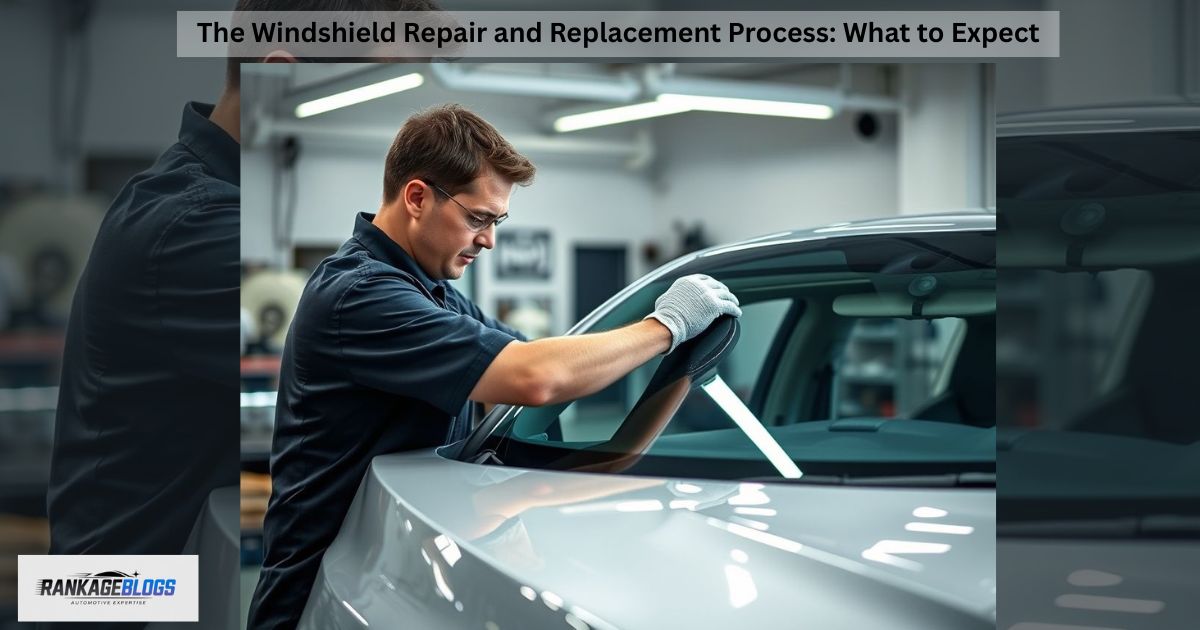
Knowing what happens during a professional windshield repair and replacement service demystifies the process and sets your expectations for quality. A proper windshield replacement is a technical procedure that involves careful removal, preparation, installation, and curing. Whether you choosefv mobile service or an in-shop experience, the technician should use advanced tools and materials and follow a meticulous process to ensure the new glass is watertight, secure, and restores the vehicle’s original structural integrity and safety.
The Physical Process: From Removal and Preparation to Installation and Curing
- Removal:The old windshield is carefully cut out using specialized tools to avoid damaging the car’s frame.
- Preparation:All old urethane adhesive and debris are removed. The pinch weld (the frame where the glass sits) is cleaned, primed, and prepared for the new adhesive.
- Installation:A bead of high-strength urethane adhesive is applied to the frame. The new windshield is precisely set into place and pressed down to ensure a proper seal.
- Curing:The urethane adhesive requires time to cure and reach full strength. This can take anywhere from 1 hour to 24 hours, depending on the product and weather conditions. You will be given specific instructions on when you can safely drive the vehicle.
In-Shop vs. Mobile Auto Glass Services: Pros and Cons
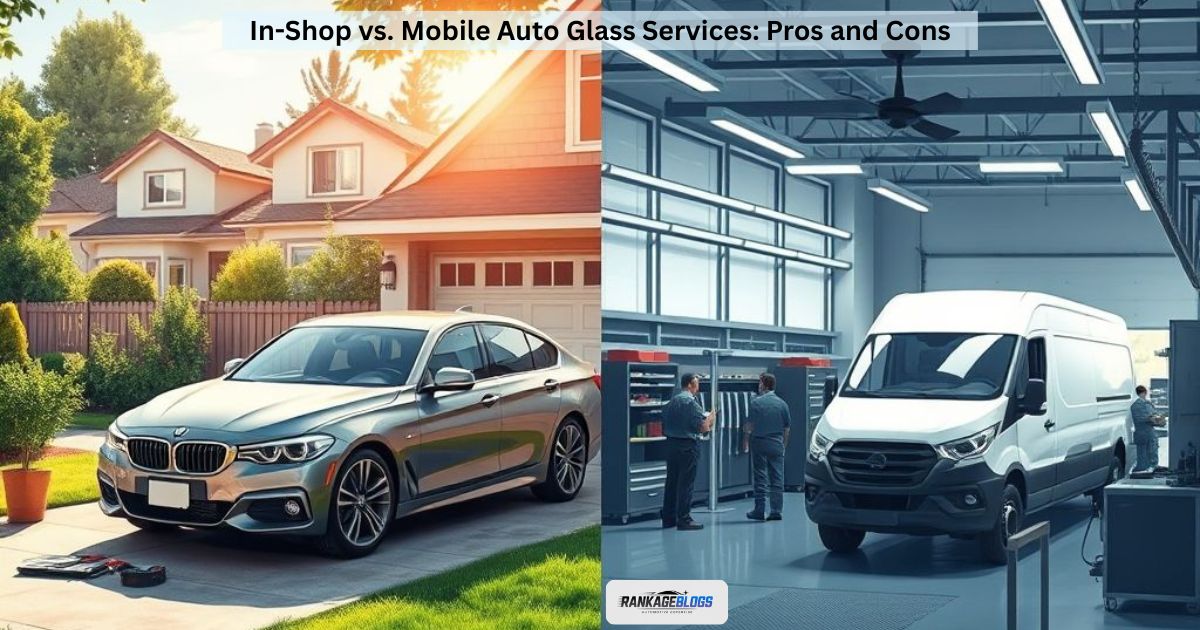
Choosing between in-shop and mobile auto glass services depends on your schedule and vehicle’s specific calibration requirements. To make an informed decision, it’s crucial to weigh the pros and cons of choosing mobile over in-shop service, as your choice can impact the overall insurance claim process.
|
Service Type |
Pros |
Cons |
|
In-Shop Service |
Controlled environment, easier access to tools and calibration equipment, often faster curing time due to climate control. | You are without your car and need a ride. |
| Mobile Service | Extreme convenience; the technician comes to your home or office. |
Weather can affect the installation and curing process. Calibration may require a later trip to a facility. |
Advanced Tools and Techniques: Resin Injection, UV Curing, and Calibration
- Resin Injection:For repairs, a special resin is injected under pressure into the crack or chip. It fills the void, restores strength, and improves clarity.
- UV Curing:The resin is then hardened using an ultraviolet light, bonding it permanently to the glass.
- Calibration:After installation, cameras and sensors for ADAS (Advanced Driver Assistance Systems) must be recalibrated to ensure they are aligned correctly with the new glass. This is a required step for modern vehicles.
How Long Does a Typical Windshield Replacement Take?
The physical removal and installation process itself typically takes 60-90 minutes. However, the critical factor is the curing time for the adhesive. While the glass may be set in place quickly, you must wait for the urethane to cure before driving the vehicle safely. A shop will often advise that the vehicle should not be driven for at least 1-2 hours (for quick-set urethanes) or even overnight for a full cure. Always follow the installer’s specific recommendations.
The Modern Challenge: ADAS and Windshield Calibration
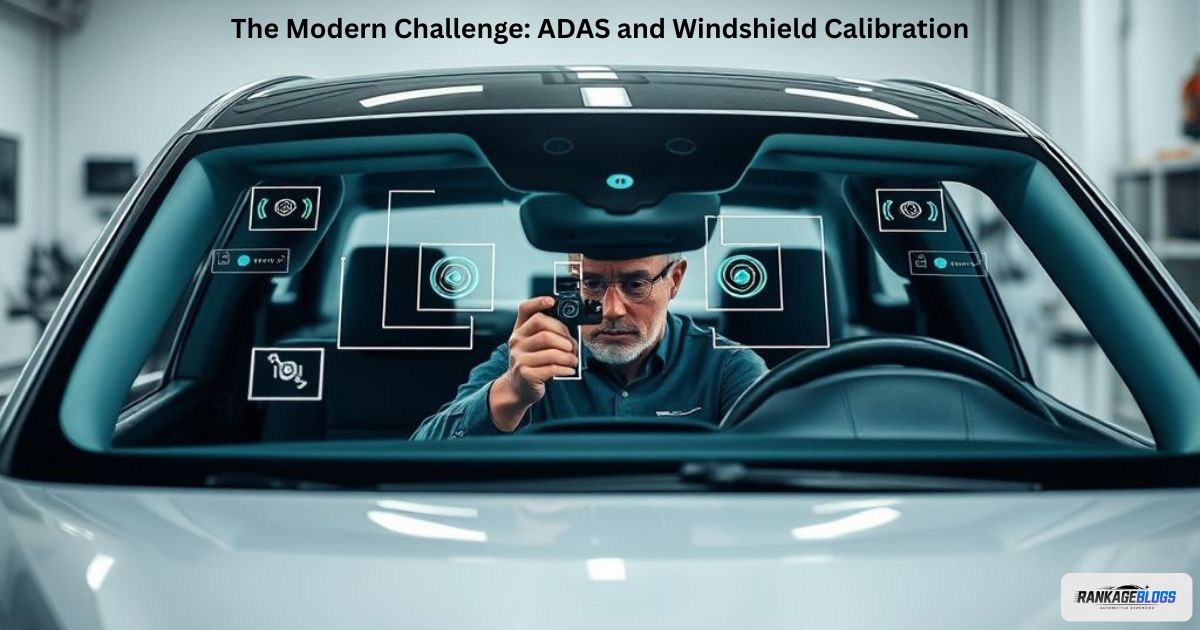
Modern vehicles are equipped with sophisticated Advanced Driver Assistance Systems (ADAS) that rely on cameras and sensors typically mounted on or near the windshield. These systems include features like automatic emergency braking, lane departure warning, and adaptive cruise control. Any disturbance to the windshield, especially a replacement, can misalign these sensitive components.
Recalibration is the process of resetting and realigning these cameras and sensors to the manufacturer’s specifications, and it is absolutely essential for these life-saving systems to function correctly.
What is ADAS? Why a New Windshield Requires Recalibration
ADAS (Advanced Driver Assistance Systems) are electronic systems that help the driver with driving and parking. They provide crucial safety alerts and can even take automatic action to prevent collisions. The cameras used by these systems are precisely aligned to a specific angle and position on the original windshield. This is why choosing a certified provider for your windshield repair and replacement is non-negotiable.
Even a millimeter of difference in the new glass’s thickness or position can throw off this alignment, causing the systems to malfunction or fail entirely. Therefore, recalibration is not optional; it is a mandatory part of a safe windshield replacement.
Does Insurance Cover the Cost of ADAS Calibration?
In most cases, yes. If your comprehensive coverage applies to the windshield replacement, the cost of necessary recalibration should also be covered. Since calibration is a required step for the vehicle to be returned to its pre-loss condition, insurers understand it is part of the claim. However, you should always confirm this with your adjuster when you file the claim to avoid any surprise bills.
How to Ensure Your Technician is Properly Certified for Calibration
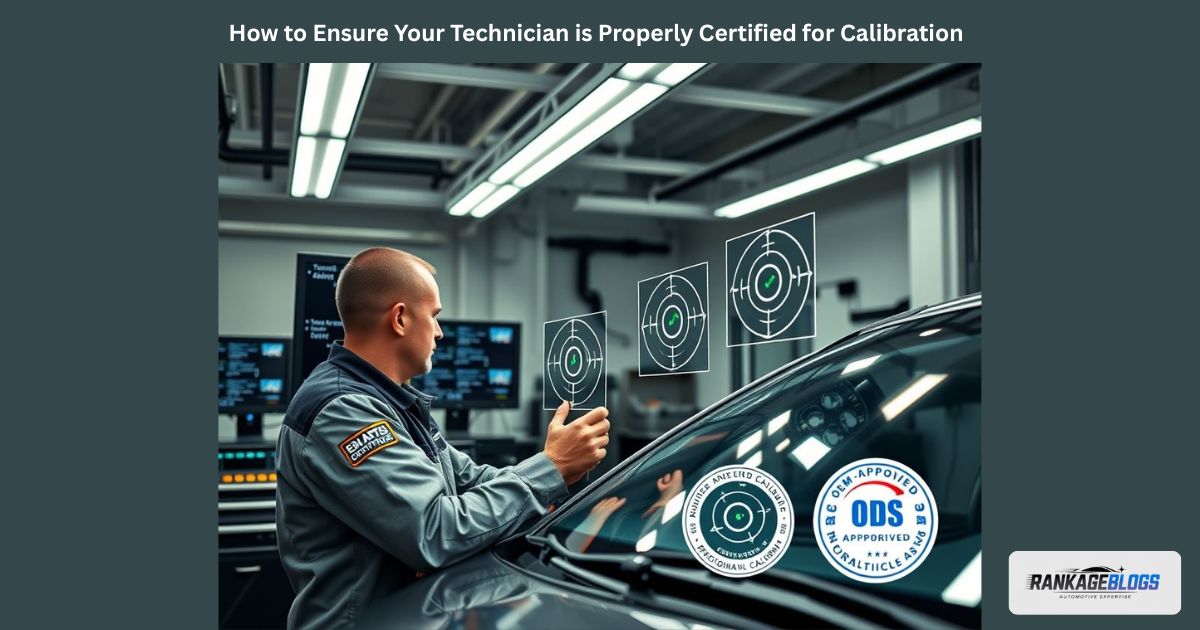
Always ask the auto glass company about their calibration process. Reputable technicians will be certified by the Auto Glass Safety Council (AGSC) or have specific manufacturer training. They should use OEM-approved calibration targets and software. The process involves driving the vehicle for dynamic calibration and/or using a static calibration bay with precise targets. Do not assume every glass shop can perform this highly technical task; always verify their certification and experience with your specific vehicle make and model.
The True Cost of Auto Glass Repair: Insurance vs. Out-of-Pocket
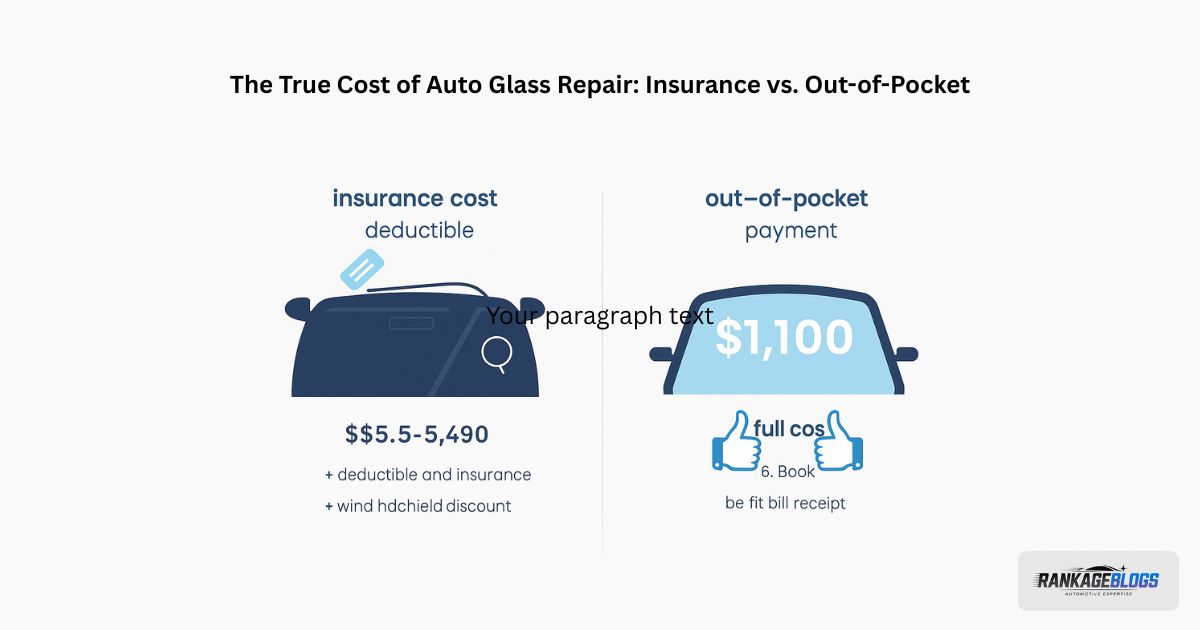
The financial aspect of windshield replacement involves balancing your deductible against the total job cost. Without insurance, you pay the full market price, which varies by vehicle and location. With insurance, your out-of-pocket cost is typically just your deductible, unless you have zero-dollar glass coverage. However, filing a claim can have implications for your premium. Understanding the full financial picture helps you decide the most economical path forward for your situation.
Average National Cost of Windshield Replacement Without Insurance
The windshield replacement cost without insurance can range from $200 to $400 for a standard sedan using aftermarket glass. For luxury vehicles, SUVs, or vans with complex shapes, advanced features like embedded antennas, or the need for OEM parts, the cost can easily climb from $500 to $1,500 or more. ADAS calibration adds another $150 to $500 to the total bill.
The True Cost of Windshield Replacement: State-by-State Averages
Costs fluctuate based on the local cost of living, labor rates, and competition. For example, a replacement might average $250 in a rural Midwest town but cost $450 for the same car in a major metropolitan area like New York City or San Francisco. It is always wise to get multiple quotes from different shops to understand the local market rate.
How Your Deductible Affects Your Final Out-of-Pocket Cost
This is a simple calculation. If the total job cost is $400 and your comprehensive deductible is $500, it makes no financial sense to file a claim, as the insurer would pay $0. You would pay the entire $400 out-of-pocket. If your deductible is $100, you would pay $100 and the insurer would pay $300. If you have a zero deductible, you pay $0.
Factors Influencing Price: OEM vs. Aftermarket Glass, Vehicle Type, Calibration
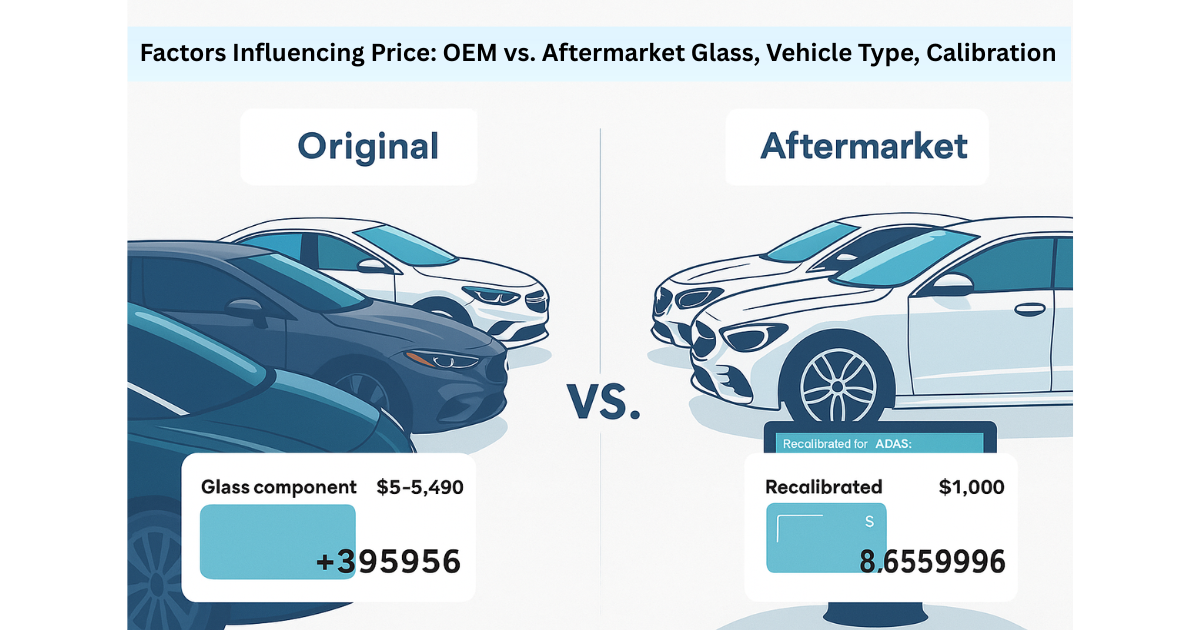
- OEM (Original Equipment Manufacturer) vs. Aftermarket:OEM glass is made by the vehicle’s manufacturer and is usually more expensive. Aftermarket glass meets safety standards but may have minor fit or optical differences.
- Vehicle Type:Rare, luxury, and new models cost more.
- Calibration:The need for static and/or dynamic ADAS recalibration adds significant cost.
- Features:Heated wiper decks, rain sensors, and tinted bands increase the price.
The Financial Pros and Cons of Filing a Glass Claim
- Pro:You get your windshield fixed for just your deductible (or $0), restoring safety.
- Con:In some states and with some insurers, filing any claim, even comprehensive, could potentially affect your future premiums or claims-free discounts.
- Pro:It’s often the most affordable way to handle a large, unexpected expense. This makes filing a claim the most financially sensible path for a major windshield repair and replacement.
- Con:If the repair cost is only slightly above your deductible, you might be better off paying out-of-pocket to avoid a claim on your record.
Environmental Impact and Sustainability
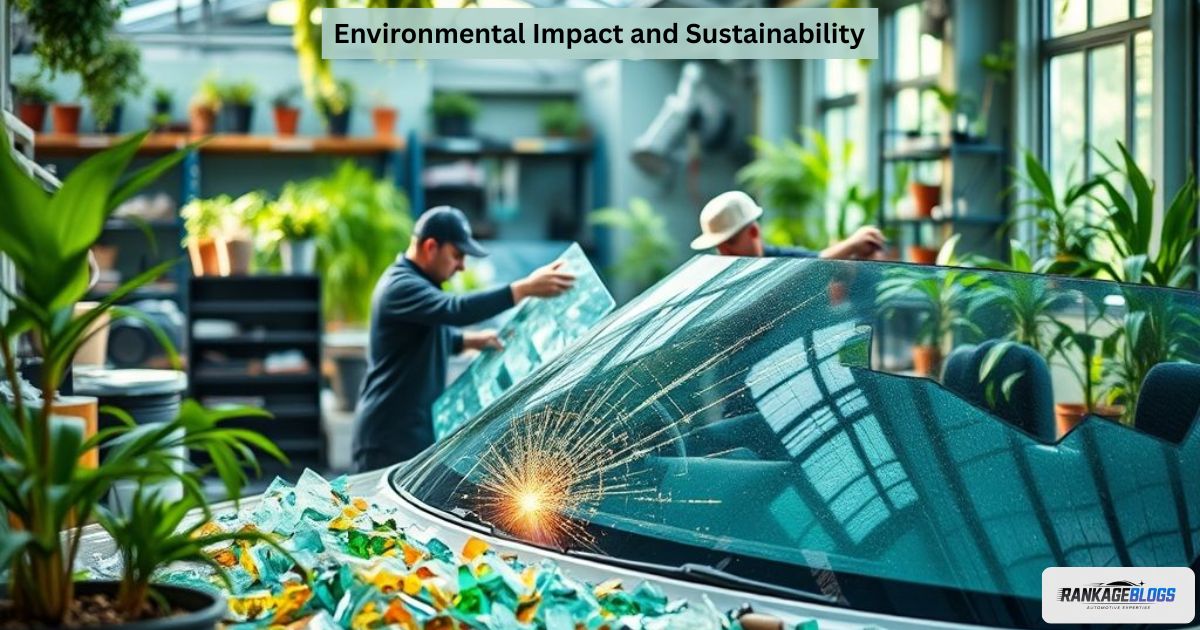
The auto glass industry, like many others, has a focus on reducing its environmental footprint. From the manufacturing process to the disposal of old windshields, sustainable practices are increasingly important. As a consumer, you can contribute by choosing shops that prioritize recycling and proper waste management, turning a necessary repair into a more eco-friendly decision.
Environmental Regulations: Proper Disposal of Old Auto Glass
Old windshields cannot be thrown in a regular landfill. The laminated glass (two layers of glass with a plastic PVB interlayer) is difficult to separate and recycle. Many states have regulations requiring proper disposal at designated facilities. Reputable auto glass shops partner with specialized recycling companies that can process the old glass, preventing thousands of tons of waste from entering landfills each year.
Recycling Initiatives and Eco-Friendly Practices in the Industry
Progressive companies in the industry are investing in recycling technologies that can separate the glass from the PVB plastic. The crushed glass (cullet) can be used for fiberglass insulation, concrete additives, or even new glass bottles. The PVB can be recycled into various products. When researching providers, ask about their recycling policies; it’s a key sign of a responsible windshield repair and replacement company. Some shops also use water-based primers and eco-friendly cleaning solutions to minimize their chemical impact.
The environmental effort is significant. Over 15 million windshields are replaced annually in the U.S. Historically, most ended up in landfills. Today, progressive companies use advanced recycling processes to separate the glass (which becomes fiberglass insulation) and the PVB plastic (repurposed into new products), drastically reducing the carbon footprint of a replacement.
The Carbon Footprint of Mobile vs. In-Shop Services
The environmental impact is a trade-off. Mobile services reduce the carbon footprint of the consumer (you don’t drive to the shop) but increase it for the company (a van drives to you). In-Shop Services consolidate work in one location, potentially making energy use more efficient. The greenest choice is often a shop that uses renewable energy, recycles diligently, and has an efficient routing system for its mobile fleet.
Maintenance, Prevention, and care for Longevity
Proactive care can significantly extend the life of your windshield and help you avoid chips and cracks in the first place. Simple habits like maintaining a safe following distance, avoiding sudden temperature changes, and using proper cleaning techniques preserve the clarity and structural strength of your glass. A little prevention saves you the hassle of repairs, insurance claims, and ensures optimal safety at all times.
Seasonal Auto Glass Maintenance Tips (Winter, Summer, Rain)
- Winter:Never pour hot water on a frozen windshield; the thermal shock can cause it to crack. Use a proper ice scraper. Ensure your washer fluid is rated for freezing temperatures to avoid damaging the fluid reservoir and pumps.
- Summer:Park in the shade or use a sun shade to minimize thermal stress. Avoid running the A/C on max cold directly onto the hot glass.
- Rain:Replace wiper blades every 6-12 months. Streaky wipers not only reduce visibility but can also grind dirt into the glass, causing scratches.
Best Practices for Safe and Effective Cleaning
Use a dedicated glass cleaner and a soft, clean microfiber towel to avoid scratches. Avoid abrasive materials like paper towels. Clean both the inside and outside of the glass regularly, as interior film from plastics and vaping can create a dangerous glare from oncoming headlights. Keep the washer reservoir filled with fluid to clear debris immediately.
How Driving Habits Can Minimize the Risk of Damage
Maintain a safe following distance from large trucks, construction vehicles, and gravel haulers. Their tires kick up most of the debris that causes damage. Avoid tailgating. On rough or gravel roads, reduce your speed. Be cautious driving behind vehicles without mud flaps.
DIY, Maintenance, and Cost Prevention Strategies
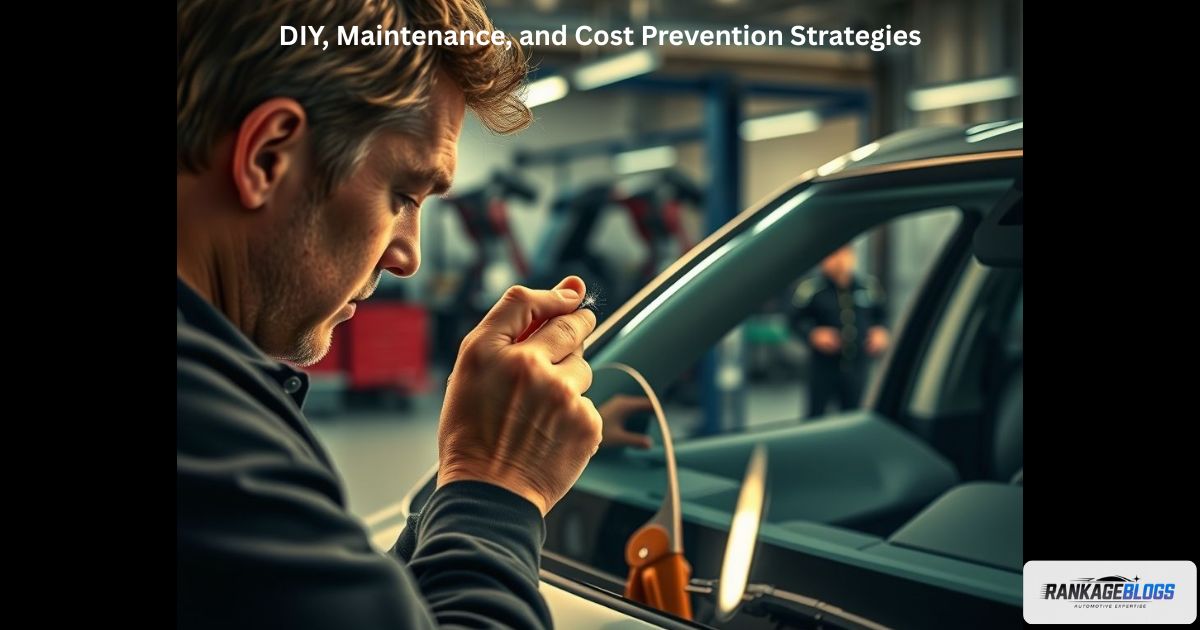
For minor damage, a DIY approach can be tempting. It’s important to know that a DIY attempt can sometimes complicate a subsequent professional windshield repair and replacement. While kits can be effective for very small chips, they have significant limitations. Understanding the pros and cons, along with other preventive strategies, helps you decide when a professional is necessary and how to protect your investment to avoid costly replacements down the road.
The Pros and Cons of DIY Windshield Repair Kits
- Pros:Very low cost ($10-$20). Immediate, convenient fix for a tiny chip. Can prevent a small chip from spreading into a large crack.
- Cons:Results are often imperfect, leaving a visible blemish. Improper technique can trap moisture and make a professional repair impossible later. They cannot fix cracks or complex chips. They do not restore the full structural integrity of the glass.
Windshield Maintenance and Preventive Care Tips
Follow the maintenance tips outlined in the previous section. The single best piece of advice is to address small chips immediately before they spread into unrepairable cracks. A prompt, professional repair is far cheaper than a full replacement and preserves the original factory seal of your windshield.
Protective Add-Ons: Coatings, Films, and Sealants
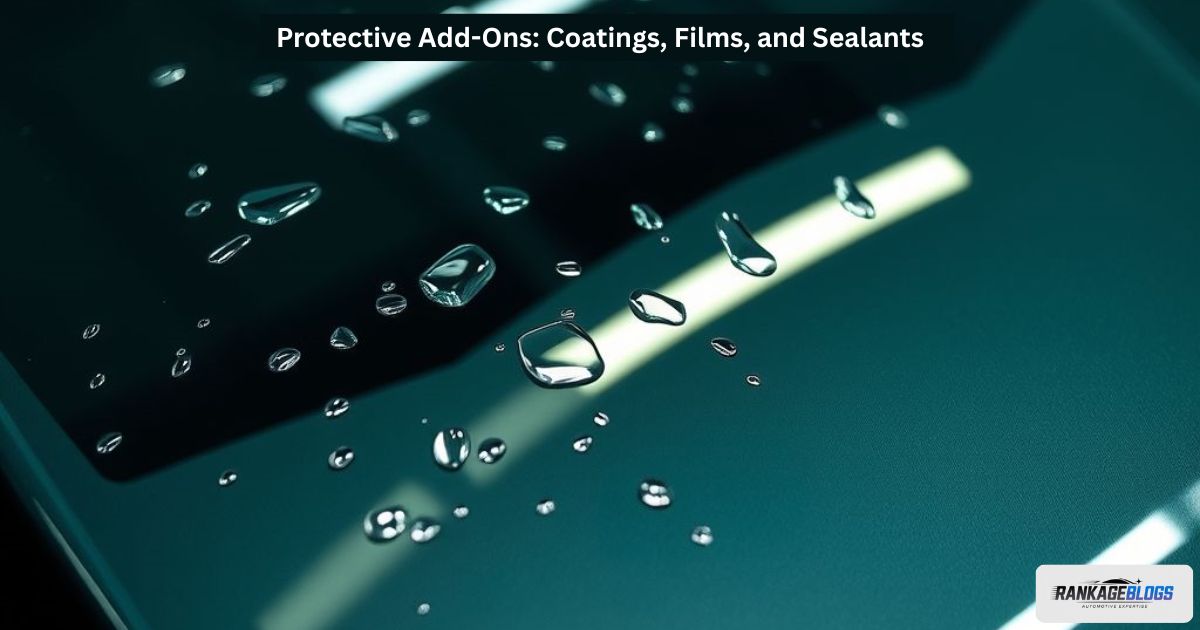
You can apply protective products to your windshield:
- Water-Repellent Coatings:Cause water to bead up and roll off, improving visibility in heavy rain.
- Ceramic Coatings:Can add a layer of protection against minor abrasions and make the glass easier to clean.
- Protective Films:Similar to paint protection film (PPF), a clear, durable film can be applied to the windshield to absorb the impact of small rocks, preventing chips altogether. This is a more expensive upfront cost but can pay for itself by avoiding replacements.
Frequently Asked Questions (FAQs)
Can I repair my windshield myself legally?
Yes, it is legal, but a professional repair is strongly recommended for safety, clarity, and to avoid compromising your vehicle’s systems.
Who pays when a rock hits your windshield?
You do, through your comprehensive insurance coverage, unless the rock came from a negligently loaded commercial vehicle.
Do I need to recalibrate my ADAS after a windshield replacement?
Yes, it is a mandatory safety step to ensure features like lane-keeping and emergency braking work correctly.
How much does an ADAS calibration cost?
It typically costs between $150 and $500, depending on your vehicle’s make, model, and calibration type.
Will my insurance go up if I claim for a windshield?
Typically, no; a glass claim is usually considered a no-fault event and should not increase your premium.
Is it worth filing a claim for a cracked windshield?
Yes, if the repair cost is higher than your deductible, especially if you have “zero-deductible” glass coverage.
What does a $500 deductible with full glass mean?
It means while your standard deductible is $500, your “full glass” add-on waives it, making the repair free.
Conclusion: Being an Informed and Protected Driver
Navigating the process of windshield repair and replacement is more than fixing glass; it’s an investment in your vehicle’s safety and structural integrity. From understanding the initial damage and navigating insurance claims to ensuring a proper installation with essential ADAS calibration, each step is vital. By choosing certified professionals, knowing your rights, and prioritizing quality, you do more than just restore clarity; you reaffirm your commitment to safety on the road. Remember, addressing damage promptly with expert care is the definitive way to protect your investment and ensure every journey is a secure one.
Final Checklist: Before, During, and After Your Service
· Before work begins: Scrutinize your insurance policy details, investigate your specific state regulations, collect estimates from several providers, and select an installer certified by the Auto Glass Safety Council (AGSC).
· While the service is performed: Validate the selection of Original Equipment Manufacturer (OEM) or certified aftermarket glass, inquire in detail about the guarantees on both parts and labor, and confirm the strategy for Advanced Driver Assistance Systems (ADAS) recalibration.
· Once the job is complete: Conduct a thorough inspection of the installation, test all associated ADAS features for proper operation, securely file all receipts and documentation, and strictly adhere to the recommended wait time before driving your vehicle.
Additional Resources and References
For definitive and current information, proactively engage with official state agencies and leading industry bodies. These organizations offer impartial guidance to help you validate details provided by insurance companies and repair shops, guaranteeing your choices are informed by the most recent standards and regulatory practices.
Essential Links to State DMV and Insurance Commissioner Websites
• National Association of Insurance Commissioners (NAIC) Directory: https://www.naic.org/state_web_map.htm (Provides direct links to each state’s Department of Insurance)
National Auto Glass Specifications (NAGS)
• Website: https://www.nags.com/ (Provides industry-standard pricing data and glass codes)
Auto Glass Safety Council (AGSC)
• Website: https://agsc.org/ (The premier organization overseeing the AGRSS standard for safe installation protocols)

